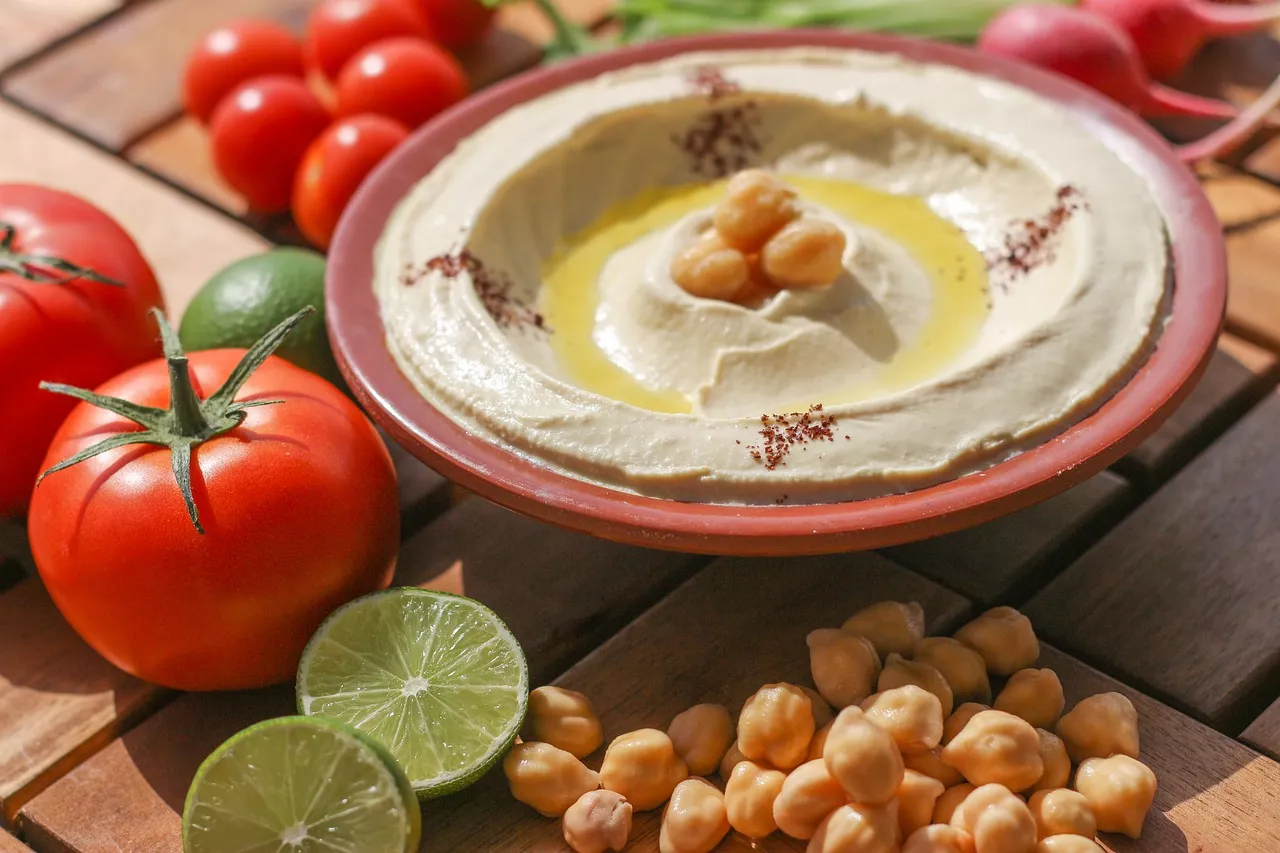The History of Hummus
Hummus, a staple in Middle Eastern cuisine, has a rich history that dates back thousands of years. It is believed to have originated in ancient Egypt, where it was first made with chickpeas, sesame seeds, olive oil, and spices. Over the centuries, hummus spread throughout the Mediterranean region and became a beloved dish in many cultures. Today, it has gained popularity worldwide for its delicious taste and health benefits.
Benefits of Making Homemade Hummus
While store-bought hummus is convenient, making your own hummus at home has its own set of benefits. Firstly, you have full control over the ingredients, allowing you to customize the flavor and texture to suit your preferences. Secondly, homemade hummus is free from preservatives and additives commonly found in store-bought versions. Lastly, making hummus from scratch is more cost-effective in the long run, especially if you're a hummus enthusiast who consumes it regularly.
Essential Ingredients for Homemade Hummus
To create the perfect blend of homemade hummus, you'll need a few essential ingredients. The star ingredient, of course, is chickpeas. Opt for dried chickpeas instead of canned ones for a more authentic taste and texture. Other key ingredients include tahini (a paste made from sesame seeds), garlic, lemon juice, and olive oil. These ingredients work together to create a creamy, flavorful base for your hummus. Don't forget to season with salt and spices like cumin or paprika to enhance the taste.
Step-by-Step Guide to Making Homemade Hummus
Now that you have your ingredients ready, let's dive into the step-by-step process of making homemade hummus.
1.
Soak and cook the chickpeas: Start by soaking the dried chickpeas overnight in water. Drain and rinse the chickpeas, then cook them in a pot of fresh water until tender. This process allows the chickpeas to soften and ensures a smooth texture for your hummus.
2.
Prepare the tahini: While the chickpeas are cooking, prepare the tahini by blending sesame seeds and a little bit of olive oil until smooth. This step is crucial for achieving a velvety consistency in your hummus.
3.
Blend the ingredients: Once the chickpeas are cooked and cooled, transfer them to a food processor or blender. Add the tahini, garlic, lemon juice, olive oil, salt, and spices. Blend until the mixture reaches a smooth and creamy consistency. If needed, add a little bit of water to achieve the desired texture.
4.
Taste and adjust: Give your hummus a taste and adjust the seasoning according to your preference. Add more lemon juice for a tangier flavor or more garlic for an extra kick. Don't be afraid to experiment and make it your own!
Tips for Achieving the Perfect Blend
Creating the perfect blend of homemade hummus requires a little finesse. Here are some tips to help you achieve that velvety smooth texture and delicious flavor:
1.
Peel the chickpeas: For an ultra-creamy hummus, consider peeling the cooked chickpeas. While this step can be time-consuming, it results in a smoother texture without any graininess.
2.
Use ice water: If you find that your hummus is too thick or dense, add a splash of ice water while blending. The cold water helps to lighten the texture and make it fluffier.
3.
Add olive oil gradually: When adding olive oil to your hummus, do it gradually while the blender is running. This allows the oil to emulsify with the other ingredients and create a smoother consistency.
4.
Experiment with spices and flavors: Don't be afraid to get creative with your hummus! Add different spices like smoked paprika, cayenne pepper, or roasted red pepper to give your hummus a unique twist. You can also incorporate herbs like cilantro, parsley, or dill for added freshness.
Creative Variations and Flavor Combinations
While traditional hummus is delicious on its own, there are endless possibilities for creative variations and flavor combinations. Here are a few ideas to get you started:
1.
Roasted Red Pepper Hummus: Blend roasted red peppers with your hummus base for a smoky and slightly sweet flavor.
2.
Sundried Tomato and Basil Hummus: Add sundried tomatoes and fresh basil leaves to your hummus for a burst of Mediterranean flavors.
3.
Spinach and Feta Hummus: Incorporate wilted spinach and crumbled feta cheese into your hummus for a vibrant green dip with a tangy twist.
4.
Spicy Jalapeno Hummus: For those who like it hot, blend in some diced jalapenos and a dash of hot sauce for a fiery kick.
Serving Suggestions and Accompaniments
Now that you have your homemade hummus ready, it's time to decide how to serve it. Traditional hummus is often enjoyed as a dip with pita bread, carrot sticks, or cucumber slices. However, the possibilities are endless! Here are a few serving suggestions and accompaniments to consider:
1.
Hummus Bowl: Create a hummus bowl by spreading a generous amount of hummus at the bottom of a bowl and topping it with your favorite ingredients like roasted vegetables, olives, and feta cheese.
2.
Hummus Wrap: Spread a layer of hummus on a tortilla or flatbread, and fill it with fresh vegetables, grilled chicken or falafel, and a drizzle of tahini sauce.
3.
Hummus Stuffed Mushrooms: Fill mushroom caps with a dollop of hummus and bake until golden and tender for a delicious and healthy appetizer.
4.
Hummus Salad Dressing: Mix a spoonful of hummus with lemon juice, olive oil, and a pinch of salt to create a creamy and flavorful salad dressing.
Storing and Preserving Homemade Hummus
If you have any leftover hummus or want to make a larger batch for future use, storing and preserving it properly is essential. Here are some tips to keep your hummus fresh and delicious:
1.
Refrigeration: Transfer the hummus to an airtight container and store it in the refrigerator. Homemade hummus can typically be refrigerated for up to a week.
2.
Olive oil seal: To prevent your hummus from drying out, create a thin layer of olive oil on top of the hummus before refrigerating. This helps to seal in the moisture and maintain its creamy texture.
3.
Freezing: If you want to extend the shelf life of your hummus, it can be frozen for up to three months. Divide it into smaller portions and store them in freezer-safe containers.
Conclusion: Embracing the Joy of Homemade Hummus
Congratulations! You've now mastered the art of homemade hummus. By following these tips and tricks, you can create the perfect blend of creamy deliciousness in your own kitchen. Whether you stick to the classic recipe or get adventurous with creative variations, homemade hummus is sure to delight your taste buds and impress your friends. So, grab your ingredients, fire up the blender, and let the hummus-making adventure begin!

 Catering Tips for Beginners That Will Wow Your Guests
Catering Tips for Beginners That Will Wow Your Guests Perfectly Crispy Schnitzel A Step-by-Step Tutorial
Perfectly Crispy Schnitzel A Step-by-Step Tutorial



